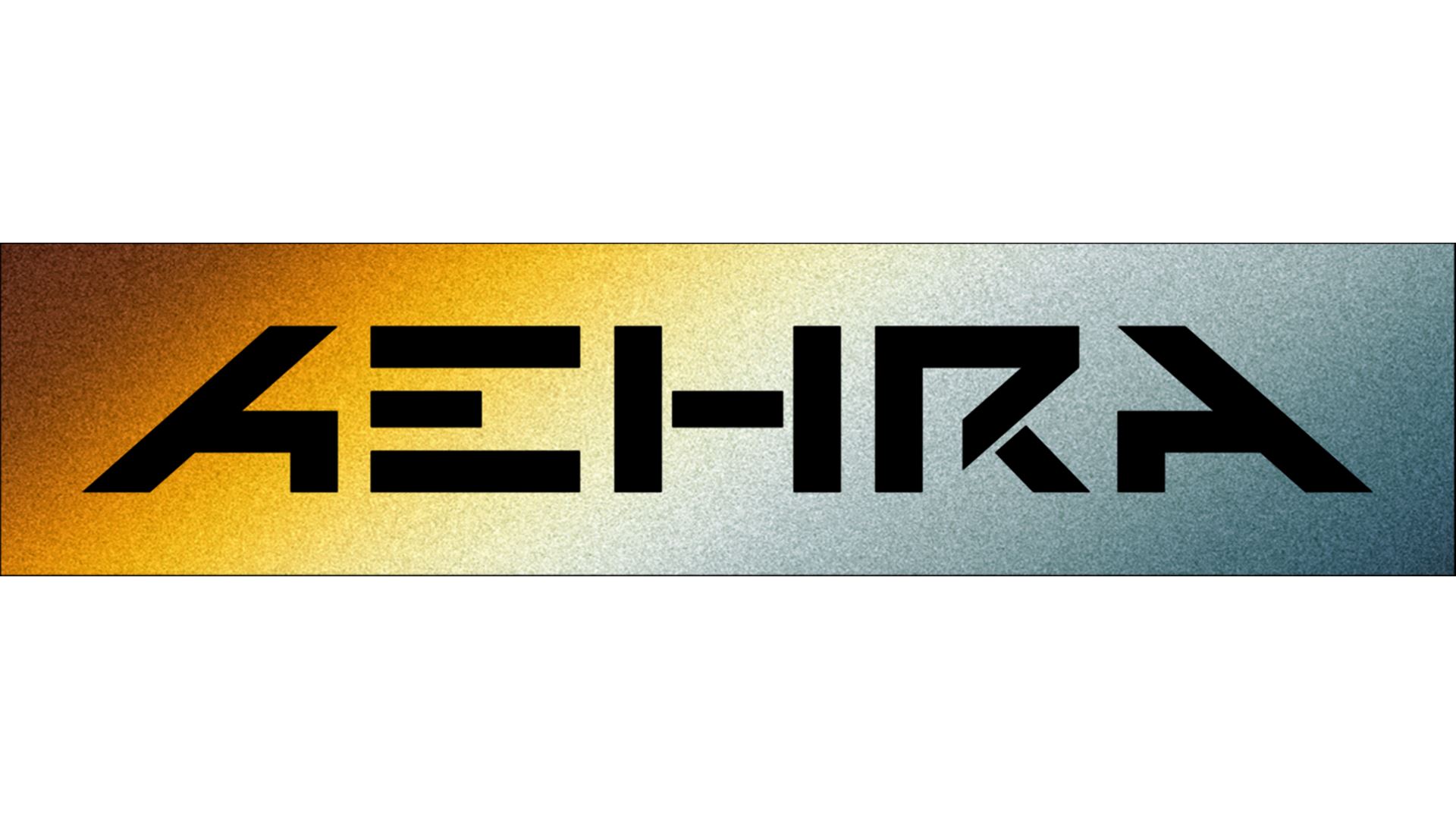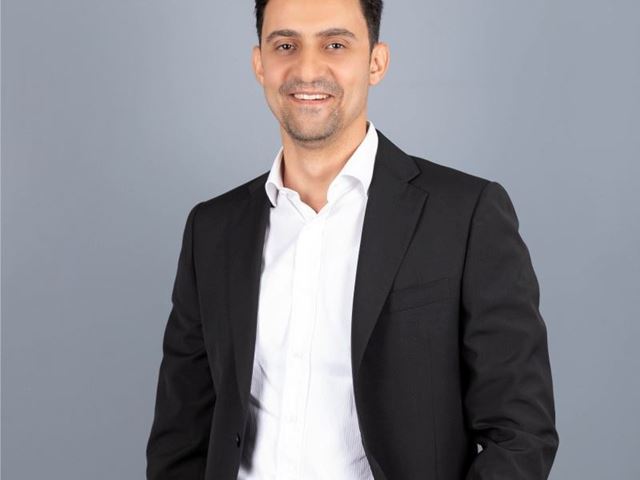- Latest: Welcome to Auto Futures - Mobility News, Features, Exclusives and More...
- Latest: Mercedes-Benz Unveils the SUSTAINEER - an Electric Last-Mile Delivery Solution
- Latest: XPENG & Volkswagen to Jointly Develop Electrical/Electronic Architecture in China
- Latest: Honda Unveils Ye - its Next-Generation EV Series for China
- Latest: JLR Launches Portable Battery Energy Storage System Using 2nd-Life PHEV Batteries
- Latest: The US Startup Rolling out Urban Curbside EV Charging - Voltpost's CEO
"Our Vehicles Detach from Traditional Layouts" − AEHRA Co-Founder and CEO Hazim Nada

"When we started, we took all the electric sedans in production and you could literally overlap them. The silhouettes of each overlap," says Hazim Nada, CEO and founder of AEHRA.
AEHRA, if you are unfamiliar, is a nascent electric car startup based in Italy but with industry-shaking ambition. The company has two cars in the works, an SUV which it plans to reveal in October and a sedan which will lift cover in February. Both cars are expected to be on sale in 2025.
However, while Nada is bullish about the prospects for AEHRA during our chat, there are several very large and important questions to be answered.
Starting From Scratch
"The Aehra project started about three years ago and it starts from a mixture of two things. First and foremost, I spent about 15 years trading crude oil," says Nada.
"It’s an activity that basically takes you 24/7 the whole year, you can never detach yourself from the trade, there are always issues to handle from shipments to delays, the financing of each cargo, the pricing of each crude, logistical issues, quality issues."

However, as this work continued, Nada says that he felt "imprisoned" by the system and felt a desire to do something more "beneficial."
"At the same time," he continues, "I come from an aerodynamics background. One of my investments and developments in which I was personally involved was your largest wind tunnel.
"And, basically, the need to transition from what I was doing to creating an energy system that the world is moving to, along with my aerodynamic experience made me look into this [creating AEHRA] because I was feeling the change in some of the markets I was operating in."
From there, along with Sandro Andreotti, Nada founded AEHRA.
"The project has really been ongoing for about three years," says Nada.
"We've completed the pre‑feasibility engineering basis, with standards components that are available in the market. We're now in the phase of negotiations with the main suppliers for both the structural elements and the main electrical sub‑components. Once this phase is finished, we'll begin with the industrialisation.
"What we're going to show in October is not just a design exercise, it sits on top of a well-studied, well-engineered subsystem."
A New Approach
"We are taking all the knowhow and materials and an engineering legacy from Italy that can be optimised for the EV segment," says Nada.
"Our vehicles are vehicles that detach from the traditional layouts. And, thereby, we obtain cabin spaces that are very different while utilising materials that, in the segments we're targeting, have not been utilised yet."
This kind of radical talk litters our conversation with Nada. He is clearly confident in the ability of the more than 150 engineers he and the rest of AEHRA's executive team have assembled to make cars that break the mould.
But what will those cars look like? The company has, understandably, been coy about certain specifics but has been remarkably open about the kind of companies it is looking to challenge.
Press materials state quite clearly that AEHRA is targeting customers that would usually buy from Tesla, Lucid, BMW, Mercedes-Benz, and Porsche and that the company's first two cars will go on sale for between $160,000 and $180,000. It is also planning to shift between 15,000 and 25,000 of each model in its first full year.
"We see pure EV startups being able to attract more demand than the traditional OEMs today," says Nada.
"We see the success of various names that have come on board. Now they are all facing shortage issues as is everyone else, but in terms of orders and traction, we see the market really wanting new brands that can show new materials and products. We feel a boredom with the end user because of the standardisation of vehicles over the last decade."
While it is true that Tesla managed to sell more all-electric cars than BMW, Mercedes-Benz, and Porsche put together in the first half of this year, it feels inevitable that, with the all-electric share of those 'legacy' brands' sales increasingly inexorably, they will overtake challenger brands.
Nada cites the likes of NIO, Nikola, and Rivian as challenger companies that AEHRA could emulate.
"We see European brands being lost in the EV segment," he explains.
"So, if you were to ask anybody, what high-premium is, you would see that European brands represent high-premium. But, at the same time, there is still a lag in terms of EV transition from the European brands, relative to what's coming out of California and China."
However, whether AEHRA is able to tap into the gap that Nada describes remains to be seen.
Timing is Everything
Nada is clearly confident that AEHRA has the products and engineering chops to disrupt the luxury EV market.
But, with the ongoing global supply chain issues and looming recessions around the world, it seems unlikely that anyone would choose right now to bring a new company to market.
As Nada explained, the project has been ongoing since 2019 and, with a market capitalisation of $770 million, the company has a serious level of financial backing.
"We see both the need to show a return for the investors and our partners in the first vehicles that we produce," he says.
"But, at the same time, we're addressing the market need and the natural outlet of the calibre of materials, staff, and design that we have on board."
Perhaps AEHRA will be able to overcome the serious challenges that all automakers − whether they are disruptive challengers or 'legacy' brands − are facing. Perhaps the radical design choices and high-end materials will convince buyers to part with almost $200,000 on a car from a well-staffed and well-funded but unknown automaker.
AEHRA has certainly taken some precautions just in case.
"Our approach is asset-light, whereby we focus on our innovation elements, which are the layouts, the design, and the whole customer experience," explains Nada.
"We do not want to sit there and invest in what everyone else has been investing in for many years − developing better batteries, better motors. This is not our current knowhow and we think there has been a flourishing of activity and we do not see the added value in doing so."
As ever, it comes back to design choices and trying to rip up the rule book of automotive design.
"They all have this long hood which nobody uses and certain elements that we thought were arising from the need to validate electric vehicles [in the minds of consumers]. But we think the market has moved away. Electric vehicles have been accepted now," he says.
"So, this is a time when you can start to innovate the shapes and the resulting cabin spaces and we see that the market needs this, the customer needs this because there is boredom in the market with vehicles looking alike."
"We will be the very first high-volume producers to entirely make the structural and body elements fully in carbon fibre and composites... We will be the very first to produce vehicles of the size that we are targeting and with such technology. That will address a series of issues that we think need to be addressed."
Nada also says that the new design approach and material choices will save weight, leading to improved vehicle dynamics and "unique" noise, vibration, and harshness properties. More than 70% of the components across the two vehicles will be modular, which Nada says will "significantly" lower CapEx for the project.
Either way, we will have to wait until the autumn to see what AEHRA has in store.
"For less than the traditional investment on one model's development, we are able to obtain two very innovative and very sexy models, as we like to call them," says Nada rounding off our chat.
"The vehicles will be very emotional but, at the same time, very elegant. And, while emotional today means supercars, we are able to have cabin space and comforts that the largest vehicles in production today are unable to get. So, we really think we've managed to express the best of an attractive exterior with the most functional interior."
Consider our interest piqued.
